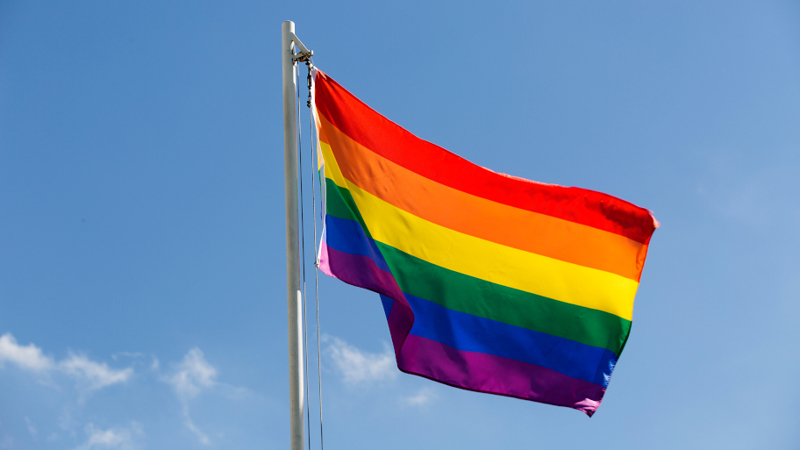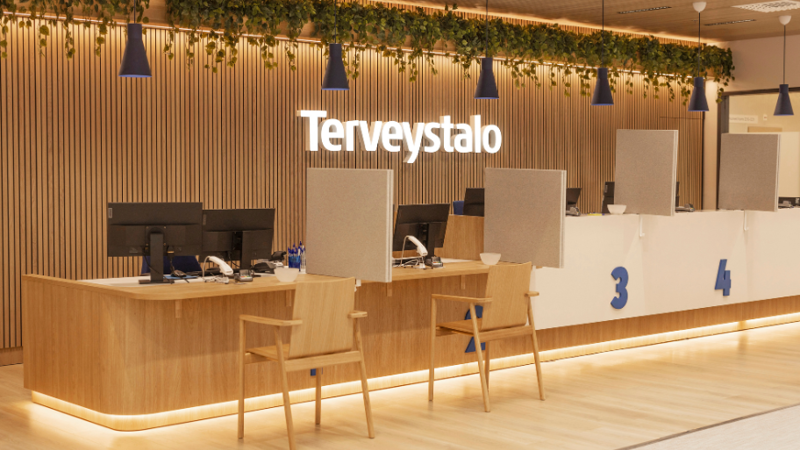Equal working life increases flow, efficiency and commitment
We spend a large part of our lives working, which is why equality and parity at work is particularly important. We can only bring our full potential to work if we feel safe in our environment and if we are allowed to be our genuine selves at work. If we need to hide who we are in our everyday lives, it eats away at our energy levels. Therefore, promoting equality and diversity has a direct link to personnel’s well-being, performance, the organization’s reputation and results and the employer image. Anu Harjumaaskola, Occupational Health Psychologist at Terveystalo, explains what kinds of action in work communities can ensure and maintain equality.

In our society, Finnish working life and even globally, equality is the starting point of cooperation. Many organizations have assessed questions of equality in relation to the time they are living in, and in the previous decades, they have addressed questions such as gender equality, age discrimination and ethnicity.
“Right now, we are on a journey of understanding and adopting questions related to diversity. In the future, these questions will most likely be considered as normal and self-evident as questions related to environmental responsibility are today,” says Harjumaaskola.
In her work as an occupational psychologist, Harjumaaskola has discovered that there have been huge leaps of progress in the field of gender sensitivity, diversity and equality in recent times, and the concept of a safe space, for example, is increasingly present in various events and meeting places. Many work communities also pay better attention to gender-neutral terminology, and have updated their equality and parity plans to cover the concept of gender diversity as well.
“The operating environment and customer base increasingly require organizations to consider questions of diversity. Companies cannot give such a customer promise outwardly before making the same promise to their personnel. For example, if a restaurant promises to be a safe space for its customers, it must also be a safe space for its personnel or the promise lacks credibility,” says Harjumaaskola.
Regulations and policies maintaining structural inequality still exist in society and can be hard to identify if they do not impact your everyday life. The Transgender Act, for example, specifies what is possible in life and what is not. Organizations may have similar restrictions and conditions that shut some people out, even if that is not their purpose. On a journey to an equal organization, the employer is responsible for demonstrating the will to respect diversity and setting up standards for how to act when someone violates that goal.
“Setting up standards is a good idea, because studies show that the workplaces where, from the new employee orientation onwards, everyone understands the rules of interaction and the shared operating model for addressing inappropriate behavior and harassment have a lower incidence of inappropriate behavior compared to other organizations,” says Harjumaaskola.
Actively promoting equality strengthens employees’ work ability, motivation and commitment to the organization.
“Each employee needs to feel treated fairly and justly at work and to feel safe at work. This keeps the mental load of working life in check and prevents harmful stress which, if prolonged, can lead to burnout and illness,” says Harjumaaskola.
Words create our reality
An equal work community stems from the right attitude; willingness to learn, being aware of your actions, even when unintentional, and understanding diversity. To ensure equality, working environments should pay attention not only to compliant operations but to the practical application of the spoken language and the ways of phrasing things.
1) Never assume anything but diversity
We are all unique individuals. Talk of sexual minorities unintentionally includes the assumption of the existence of a majority. In reality, each one of us is part of some type of minority, which is why it is more equal to talk about diversity.
2) Adopt the terminology
A positive and interested attitude towards learning is the decisive factor. Learn about the rainbow vocabulary found on the Seta website and learn more about diversity and safe, gender-sensitive terminology.
3) Examine your way of talking and make it equal
Spoken language can often be unintentionally loaded, so examine your way of talking and think about ways to express things more equally. Think about your workplace; does it ‘allow’ and ‘tolerate’ differences? ‘Accepting’ difference suggests that every one of us is not a unique individual. It is more equal to say that your workplace appreciates diversity.
4) Put your phrasing appreciating diversity into practice
Phrasing and statements should translate to practical choices, such as gender-neutral spaces and the option to personally define your gender in surveys and forms. Especially in fields where the employees meet people, it is a good idea to train your personnel to consider diversity in their encounters and mutually agree on a policy of using gender-neutral terms.
According to Harjumaaskola, the main issue is that organizations wake up to this topic and set out on a journey in line with their resources towards a diverse and healthy work community. Maintaining equality and parity requires constant work as organizations that do not develop tend to fall back.
Latest articles

Terveystalo and Gosta Labs deepen their cooperation: the goal is to streamline work with a superior patient information system
Terveystalo is deepening its cooperation with Finnish health technology company Gosta Labs and investing €1 million in the company as a minority investor. The aim is to jointly develop artificial intelligence solutions that improve the quality of care and the efficiency of reception work as part of Terveystalo's new patient information system, Terveystalo Ella.

Terveystalo's revised occupational health invoicing practices increase transparency and invoicing accuracy
Over the past few months, we at Terveystalo have taken significant steps towards a more transparent and customer-oriented invoicing practice in our occupational health services. Based on feedback from our customers, the extensive development work launched in the spring has produced concrete results, and the new invoicing model developed in response to our customers' wishes will be available to all our customers in early 2026. For our customers, the results of this development work mean clearer invoices, better quality, and smoother cooperation.

First aid preparedness in companies requires action and courage
First aid skills increase resilience, but a barometer survey of Finnish organizations' first aid capabilities published in October reveals that the number of trained personnel is alarmingly low.

Terveystalo implements the industry's most accurate billing quality monitoring system
As part of the broader development work launched in the spring, focusing on transparency, customer orientation, and the utilization of digital tools, Terveystalo has created the industry's most accurate tool for verifying the accuracy of invoicing, which was introduced in September 2025.

Let's reform occupational health together
Laura Karotie, SVP Corporate Health at Terveystalo, shares her initial observations on how occupational health can be developed in a customer-oriented and sustainable manner.
